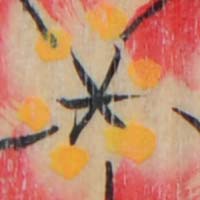Nikon D300 Review
Review Date: January 21st 2008
Author: Gavin Stoker
Leave a comment about this Review
|
Image Quality
All of the sample images in this Review were taken using the 4288 x 2848 [L] JPEG mode, which gives an average image size of around 5-6Mb.
Noise
There are 7 ISO settings available on the Nikon D300 which you can select at any time if the camera is in any shooting mode. I'm happy to report that noise is impressively well handled up to ISO 1600 � so much so that I had to check against File Info in Photoshop in case my eyes were deceiving me, there being so much consistency and so little difference as regards visible grain (or rather lack of) between the settings up to this speed. From ISO 1600 on, there are visible artefacts, but even at ISO 3200 the results are much, much better than expected. Here are some 100% crops which show the noise levels for each ISO setting.
LO 1EV (100% Crop) |
ISO 200 (100% Crop) |
 |
 |
ISO 400 (100% Crop) |
ISO 800 (100% Crop) |
 |
 |
ISO 1600 (100% Crop) |
ISO 3200 (100% Crop) |
 |
 |
HI 1EV (100% Crop) |
|
 |
|
Sharpening
Here are two 100% crops which have been Saved as Web - Quality 50 in Photoshop. The right-hand image has had some sharpening applied in Photoshop. The out-of-the camera images at the Standard setting are slightly soft and benefit from some further sharpening in a program like Adobe Photoshop. Alternatively you can change the in-camera sharpenening level if you don't like the default results.
Original
(100% Crop) |
Sharpened (100% Crop) |
 |
 |
 |
 |
Chromatic Aberrations
The Nikon D300's 17-55mm 1:2.8 G ED DX kit lens handled chromatic aberrations extremely well, with little or no pixel fringing to groan about, as shown in the example below.
Chromatic
Aberrations (100% Crop) |
 |
Flash
The flash settings on the Nikon D300 are Front-curtain Sync (normal), Red-eye Reduction, Red-eye Reduction with Slow Sync, Slow Sync and Rear-curtain Sync. These shots of a white coloured wall were taken at a distance of 1.5m.
Flash Off - Wide Angle (27mm) |
Auto Flash - Wide Angle (27mm) |
 |
 |
Flash Off - Telephoto (82mm) |
Auto Flash - Telephoto (82mm) |
 |
 |
And here are some portraits. As you can see, neither the Front-curtain Sync or the Red-Eye Reduction options caused any red-eye.
Flash On |
Flash On (100% Crop) |
 |
 |
Flash - Red-Eye Reduction |
Flash - Red-Eye Reduction (100% Crop) |
 |
 |
Night Shot
The Nikon D300's maximum shutter speed is 30 seconds and there's also a Bulb option for longer exposures, which is great news if you're seriously interested in night photography. The shot below was taken using a shutter speed of 13 seconds, aperture of f/2.8 at ISO 200. I've included a 100% crop of the image to show what the quality is like.
Night Shot |
Night Shot (100% Crop) |
 |
 |
Overall Image Quality
Unfortunately I didn't have the opportunity to whisk the Nikon D300 away to Antarctica during the duration of my test, though it did coincide with the most teeth-chattering weather in overcast London. In low light without flash I missed the built-in back up of a VR-equipped lens to avoid the occasional soft shot. I don't like to use flash in the main, when it can be avoided, so for me � and obviously many others � the D300's handling of noise will be a key decider. Therefore I'm happy to report that noise is impressively well handled up to ISO 1600 � so much so that I had to check against File Info in Photoshop in case my eyes were deceiving me, there being so much consistency and so little difference as regards visible grain (or rather lack of) between the settings up to this speed. From ISO 1600 on, there are visible artefacts, but even at ISO 3200 the results are much, much better than expected. White balance when shooting large, fine quality JPEGs is accurate � due in part to Nikon's new Scene Recognition system � and handled a mixture of tungsten and flash reasonably well during the test shots taken in the studio. Overall with enough illumination, or a steady surface to rest on, the Nikon D300 delivers naturalistically coloured, crisp and sharp images that truly jump off the screen. Metering and exposure is as reliably accurate as you'd expect, with little or no pixel fringing to groan about. There was some barrel distortion visible when shooting at maximum wideangle setting with the supplied test lens, particularly visible when examining the brickwork on our white wall shot, but again this is no worse and a good deal better than some. The overall impression given by the Nikon D300's performance is that we've only scratched the surface of what it is capable of.
|
![]() PhotographyBLOG
is a member of the DIWA
organisation. Our test results for the Nikon D300 have been
submitted to DIWA
for comparison with test results for different samples of
the same camera model supplied by other DIWA
member sites.
PhotographyBLOG
is a member of the DIWA
organisation. Our test results for the Nikon D300 have been
submitted to DIWA
for comparison with test results for different samples of
the same camera model supplied by other DIWA
member sites.
